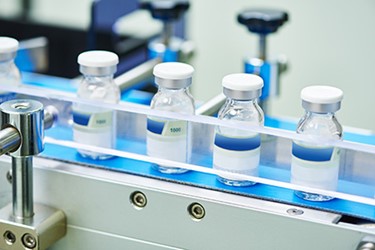Putting Fill-Finish Customization Into Your Line Of Sight
By John Erdner, Portfolio Manager, Fill-Finish, SP

The biopharmaceutical industry continues to grow rapidly, driven by more specialized treatment protocols and the development of new and more complex treatments, such as Antibody-Drug Conjugates (ADCs) and cell and gene therapies. The fill-finish manufacturing market is predicted to be worth an estimated $4.47 billion by 2022,[1] and this growing biological sector of the market typically has smaller batch sizes and is more efficiently filled with smaller, slower speed, quick changeover, filling lines. These lines are often isolated to provide containment as well as sterility to protect the product from contamination as well as the operators from exposure to the product. The final product can be delivered as a sterile liquid, powder, or suspension, and supplied in vials, syringes, or cartridges. Strong product development tools and versatile small batch aseptic filling lines are critical to shorten “time to market” and therefore are becoming increasingly important.
During manufacture, recent data shows that over 40% of biological drug products require lyophilization (freeze-drying), a percentage that is increasing. Many biological products can be fragile in a liquid form and must be freeze-dried to provide stability. Therefore, it is critical to have the correct tools to shorten the freeze-drying development time and optimize the reliability of the freeze-drying cycle. The filling lines may be designed for slower speeds, which is more suited for the smaller batch sizes, but must match or surpass the rigorous quality standards of high-speed lines. These new products are expensive to develop but have tremendous potential to cure, formerly incurable diseases. Therefore, we must produce a stable and reliable process while minimizing the risk from particulate and bacterial contamination, and comply with extensive regulatory scrutiny.
Consequently, there is a growing need for a complete package of rapid product development tools and scalable, good manufacturing (GMP) compliant, aseptic fill-finish production lines optimized for small batch applications. This article discusses the development and manufacturing challenges, and highlights the key considerations required when evaluating product development tools, selecting equipment, and optimizing small batch fill-finish lines.
Get unlimited access to:
Enter your credentials below to log in. Not yet a member of Pharmaceutical Online? Subscribe today.
